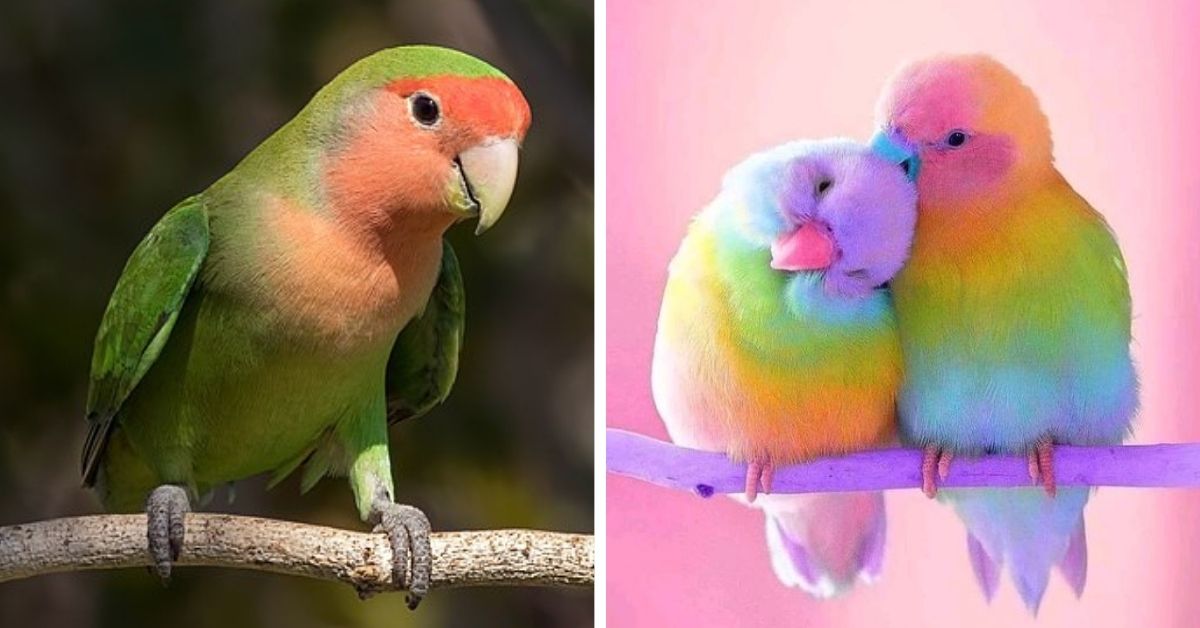Los miembros salvajes de esta especie poseen rabadillas de color azul brillante y cuerpos de color verde hoja, pero los tipos domésticos pueden ser en su mayoría azules o incluso amarillos.

CONOCE AL Agapornis de cara rosada
el agapornis de cara rosada (Agapornis roseicollis), también conocido como agapornis de cuello rosado o de cara de melocotón. Un loro pequeño, el Peachface adulto promedio mide 15 cm de largo. Dado que esta ave es tan popular en la avicultura, han surgido numerosas mutaciones de color, que incluyen, Creminos, Lutinos, Orange-faced, Pieds, Fallows, Whitefaced, Violets y Cinnamons.
The original Peachface has a green plumage, a peach-colored face, a blue rump, grey feet, and a horn-colored bill.
Both males and females look very much alike.
This species of lovebird is native to the arid regions in southwestern Africa such as the Namib Desert.
They inhabit dry, open country in southwestern Africa. They like to live up to 1,600 meters above sea level in broad-leaved woodland, semi-desert, and mountainous areas. It is dependent on the presence of water sources and gathers around pools to drink.
Their diet mainly consists of seeds and berries. When food is plentiful, they sometimes may gather in flocks containing hundreds and hundreds of birds. They can sometimes be a pest in agricultural areas feeding on crops such as millet.
During the breeding season, the nests are almost entirely made by the females, into which three to six eggs are incubated for about twenty-three days. The hatchlings will be cared for by the female until they leave the nest at about six weeks of age. The father then takes over the feeding of the young birds for another two weeks or so until they are fledged.
Due to this bird’s popularity in the pet trade, and its widespread wild population, it is judged as of least concern on the IUCN list.
WATCH AND LISTEN TO THIS BIRD RIGHT HERE BELOW: